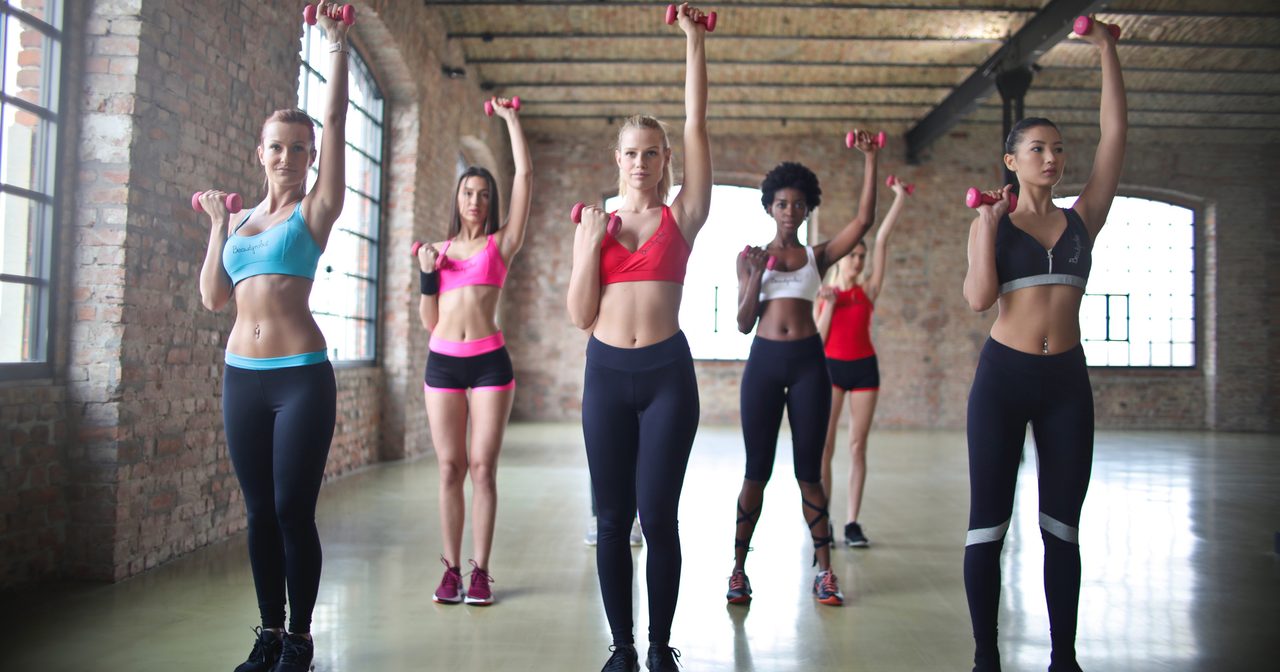Listen on: Apple Podcasts | Spotify
Weight training has a way of mimicking life, which is why the lessons learned in VIGOR Training are as practical outside the gym as they are inside it.
And just like life, the shortcuts or easy options rarely produce long-lasting results.
The following are the five most common mistakes people make with weight training. Maybe you don’t make any of these mistakes. If that’s true, pass this along because someone you know might be making them right now.

Feel Better Fast. Guaranteed.
Energy+, EDGE, and MentaBiotics make up the Happy Juice supplement stack, with ingredients clinically proven to:
- decrease anxiousness scores by 55%
- decrease irritability scores by 60%
- decrease fatigue by 64%
- decrease anger 54%
- decrease tension by 45%
- decrease confusion by 43%
- decrease overall distress by 49%
- increase good bacteria by 70%
- decrease negative mood by 105%
- increase positive mood by 211%
1. You Put Too Much Emphasis On Avoiding Pain Or Injury
Somewhere, sometime, somebody sold the idea that you can get fit and healthy without ever getting hurt.
I’ve even heard wannabe personal trainers say you should never be sore after training sessions. Sad, but true.
The reality is, reward rarely comes without risk when lifting weights or in real life.
To create deep, meaningful relationships, you have to accept that you’ll get hurt or heartbroken. To avoid ever being hurt, you’d have to avoid ever making a connection with someone else.
To lead and influence others, you’ll have to accept that the more people love what you do, the more you’ll have people who hate you too. To avoid the pain of small-minded critics, you’d have to remain small an insignificant.
To build a strong, healthy body, you first have to break it down so it can rebuild stronger than before.
You’ll often be sore, you’ll sometimes get hurt, and you’ll occasionally get injured.
When I design the VIGOR Training sessions, I do so with the goal of minimizing the risk of injury, but it isn’t possible to prevent it. The only way to avoid an injury is to do nothing. To sit on the couch day after day and get weak and fat. You might never get hurt, but you’ll also lose your health.
You can’t avoid pain. You choose your pain. The pain of building strength, or the pain of being sick.
You can choose the short-term pain and discomfort of strength training so you can become stronger, healthier, and make more of your body and mind.
Or, you can choose the future pain of obesity, heart disease, dementia, cancer, and possibly premature death by opting for the short-term comfort of crappy food and a comfortable couch.
You’re reading this because you want more from life. Rather than fearing the chance that you’ll get hurt, expect that one day you will, and decide now that you’ll carry on no matter what happens.
Building strength and improving fitness requires you to consistently push yourself harder than you have before.
The truly fit often teeter between doing just enough and a little too much.
They experience muscle soreness. They sometimes feel pain. And every once in a while, they get hurt. But we have bodies that can bounce back. It’s better to deal with occasional pain and make progress than sit in comfort and get weak and fat.
Of course, there are smart ways to train and dumb ways to train. But even when you follow a sound program, you do risk getting hurt. That’s just the nature of using your body.
If you spend your life avoiding the chance of getting hurt, you totally limit the opportunity to get healthy and fit.
2. You Change Up Your Training Program As Often As The Country Changes Presidents
Pause for a moment and try to think of an area of your life where you’re thriving, yet you aren’t growing and experiencing new challenges. You’ll have to think for a long time before something comes to mind.
A business that doesn’t explore new challenges and take new risks eventually becomes irrelevant, like Kodak.
An athletes who wins every competition gets bored or complacent. Eventually, they look for new ways to feel the high he or she once felt from the competition because like anyone else, they need to feel and experience new challenges.
A married couple who does the same thing day after day…the same shows, the same restaurants, the same vacations, heck, even the same sex, gets stale and the relationship decays.
The same thing happens with weight training. Your body adapts to your training, and once it’s mastered the movements and resistance, it gets less and less of an effect from each training session.
You don’t need to do something dramatic to continue making progress. Rather than scrolling through 30 Facebook posts between sets, you could limit your rest period to 10 posts (I’d recommend using a stopwatch instead, but as the saying goes, sometimes you need to “meet people where they’re at”).
You could also add 10% more weight than the previous training session and do the same number of reps. Or, you could do more reps with the same weight.
If the only dumbbells you’ve used for strength training come in florescent colors (like the image above), it’s time to move on and add some real weight. The fluorescent ones are fine for a first workout, or if you’re four years old. Otherwise, they don’t do much besides make a good door stop.
When I design programs, I usually include the same training sessions in a program for three to eight weeks before changing them. The first week, clients and athletes have to do a little guessing on how much weight they can handle.
The next couple of weeks, they handle heavier loads as they develop better coordination. After that, they start pushing the limits of their strength, and their body adapts by building lean body mass. Eventually, they plateau and need a change in exercises or format of the training.
If you’re still following a program you learned back when high tops were hip the first time, you definitely need something new.
3. You Change Up Your Program As Often As You Change Your Underwear
I’ll go out on a limb and make an assumption that you change your underwear every day (if you wear it).
You might have heard a celebrity trainer say, “You gotta’ keep changing things up and keep your body guessing.” Such…bad…advice.
A “first training session” is like a first date. You just test the waters and feel things out. Going on multiple first dates every week might sound fun for a while, but you won’t develop a strong, long-lasting bond with anyone that way. It’s all superficial.
Jumping into a yoga class one day, Crossfit the next, following along with a Jillian Michaels video another day, and running with a 15k team on the weekend could be entertraining, but it isn’t training.
For most people, including those in VIGOR Training, I think of training plans on an annual basis. Then, I divide things up into three to six-month blocks, where I know the training for that period will primarily improve strength, lean mass, power, speed, conditioning, or body composition. Of course, most aspects of fitness improve throughout the program, but an effective program focuses only on one or two at a time. And then, within those three to six-month blocks, I change up the training sessions every three to eight weeks.
Over the course of a year, everything improves, but I apply the training principle of specificity, focusing on one or two training goals at a time. I don’t try to tackle them all at once because that doesn’t work in the long-term.
4. You Train Like You Did In High School (Minus The Discman…Or Walkman…or Record Player)
“Uh oh…” I had a feeling like something wasn’t right as I noticed a middle-aged, overweight man saunter over to the bench press. I was training a client, and we happened to be between sets as this guy made his way over.
From the corner of my eye, I saw him load an empty bar with three 45s on each side. No warm-up sets or any kind of prep work. My client was ready to do another set, and I stopped him. “Hang on a second,” I said. I watched the other guy from my peripheral vision, not wanting to jump to conclusions.
He laid down, and with wobbly arms lifted the bar off the rack, held it for a moment over his chest and lowered it ever so slightly. Then, gravity took over. He pushed as hard as possible, but it was clear his strength had little effect on the bar.
I jumped and spun, and pulled the bar back up to the rack just as it reached his chest.
With a face as red as a fire truck, he said, “Thanks! I just joined the gym and had to come up and see if I could still bench as much as I did in high school.” I think he would have realized he didn’t have it in him after trying one plate on each side.
Not only has the science of program design changed since your days on the A or B-Squad, but your body has as well.
Your high school weight training program is not appropriate any longer. However, if you follow a well-designed weight training program, you can get in much better shape than you did during your senior year of high school.
5. You Think You Get Stronger In The Gym
This might be the biggest mistake of all. Or, at least the most common. Actually, not weight training at all would be the most common and biggest mistake.
Weight training is a stimulus, and nothing more. You lift weights to create a stress, which tells your body to build muscle, bone density, and joint integrity. It tells your nervous system to get better-coordinated with your muscle tissue.
You actually get weaker during your training session because you break down muscle tissue.
It’s in the hours and days following your session that you get stronger than before. But that only happens when you eat enough protein, get enough high-quality sleep, and make sure you’re not missing out on any micronutrients by taking supplements like a high-quality multivitamin, fish oil, and other muscle-building supplements.
When you’re brand new to strength training, you can get stronger on a diet of wine or beer and pizza or cheeseburgers, but your strength gains will be short-lived. The better your nutrition and sleep, the faster you recover between sessions and the stronger you’ll get.
Get to the gym. Get in a solid training session. Then get out and start recovering. That’s where you get strong. Of course, you can’t have one without the other. A subpar session won’t build strength, and neither will sacrificing your recovery.
Read more: Gym Workout Routines For Beginners and Intermediates
The Basics of a Solid Strength Training Program
You develop strength over an extended period of time through a consistent, quality, periodized weight training program.
I learned long ago that there are two types of trainers. Some fitness professionals entertain their clients with “fun” activities the way that kids are entertained during recess. Others train their clients like the athletes they are.
Every session has a purpose. Each week builds on the week before. That doesn’t mean the workouts can’t be enjoyed, but making them fun should never come at the expense of making them effective.
Since there are probably a million other things you could do instead of exercise, when you do exercise, don’t you want to make sure your time is well spent?

Feel Better Fast. Guaranteed.
Energy+, EDGE, and MentaBiotics make up the Happy Juice supplement stack, with ingredients clinically proven to:
- decrease anxiousness scores by 55%
- decrease irritability scores by 60%
- decrease fatigue by 64%
- decrease anger 54%
- decrease tension by 45%
- decrease confusion by 43%
- decrease overall distress by 49%
- increase good bacteria by 70%
- decrease negative mood by 105%
- increase positive mood by 211%



